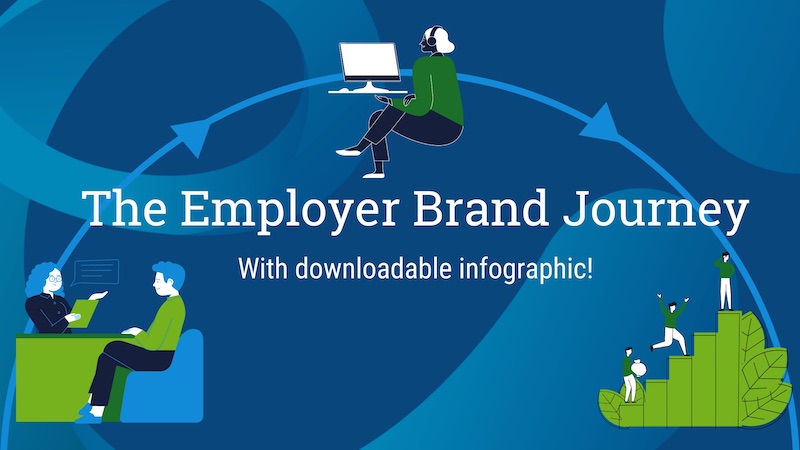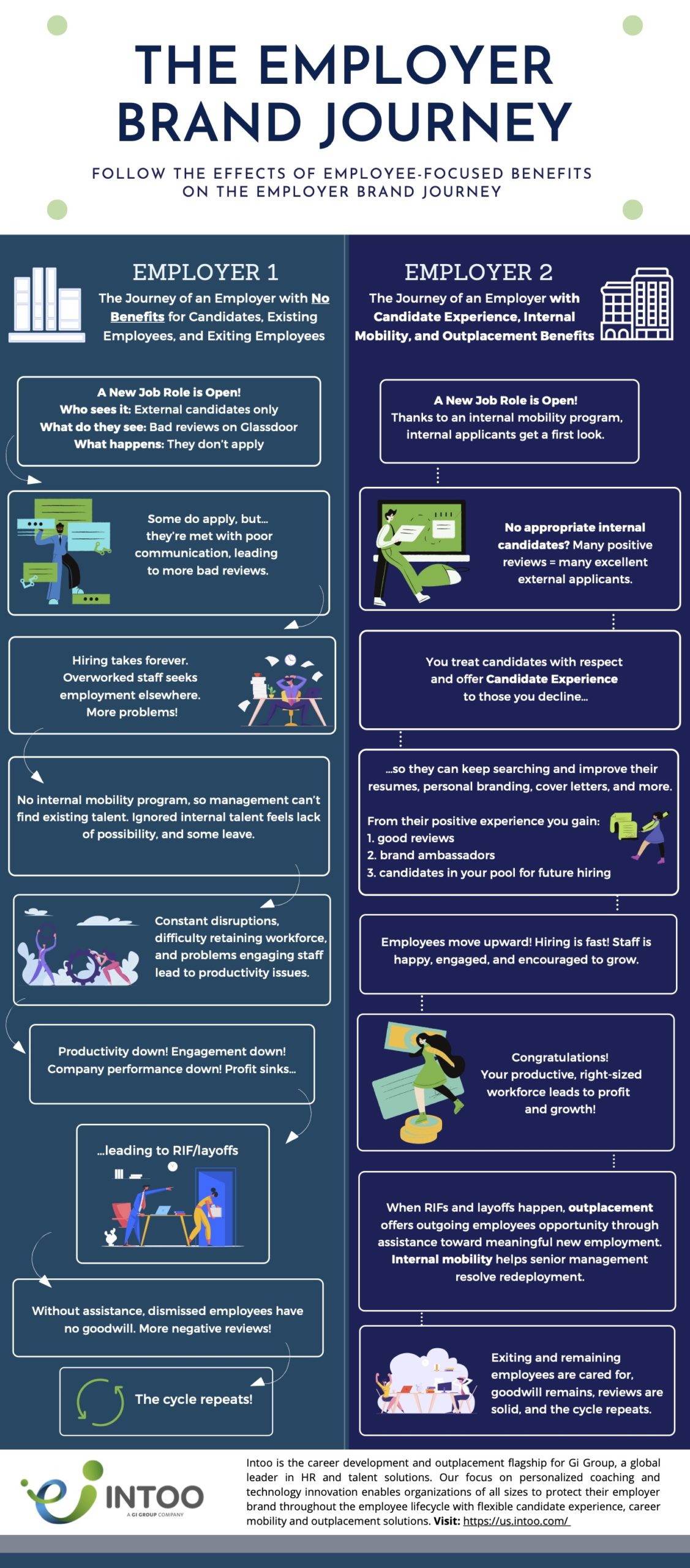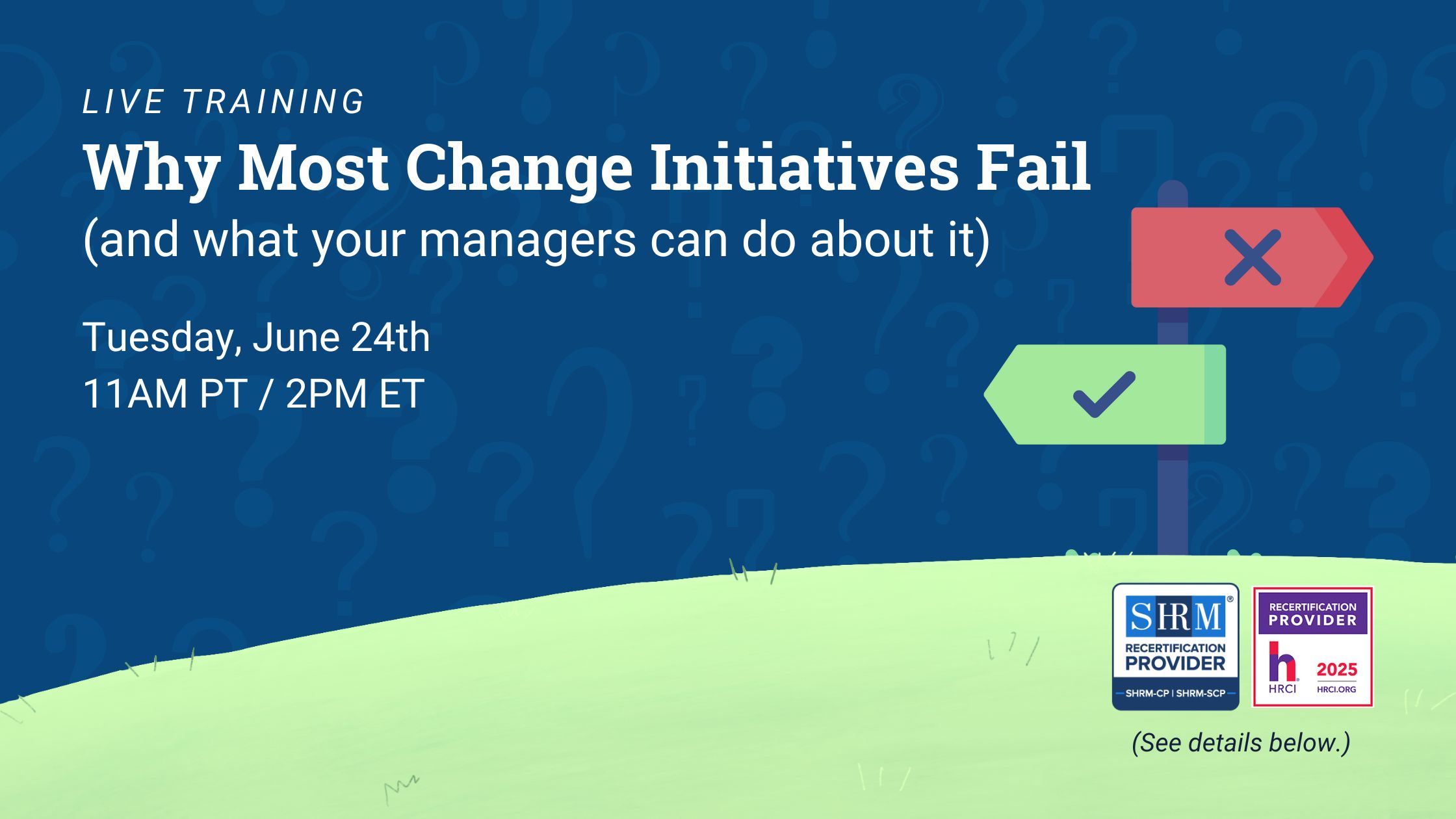It can be easy to understand how value-added benefits could help an organization maintain its employer brand reputation and increase employee satisfaction. But when you’ve gone without those services for a long time, you may not realize that your brand’s negative experiences might be resulting from their absence.
Here we’ve put two employer journeys side-by-side. On the left is the experience of an employer who doesn’t nurture or support its declined candidates, existing employees, and outgoing employees. On the right is the experience of an employer who offers a high-quality candidate experience to its declined candidates, internal mobility programs and tools to its workforce, and outplacement services to its exiting employees.
As you can see, the employer journey is a cycle. No single action stands alone from the others; they are all interconnected. No matter where your organization is in its journey, your actions—or inaction—can reap rewards or strife when it comes to your employer brand.
Click here to download the infographic.
So how do these programs make a difference for your employer brand?
The popularity of corporate review sites like Glassdoor among today’s workforce can affect your brand reputation—not just among current and potential employees, but also among your current and potential customer base. Both positive and negative reviews about your organization can spread quickly on the Internet.
When you don’t offer employee-focused services, you risk low workforce morale, engagement, and productivity by neglecting their mobility and career development. And your employees can feel overwhelmed and overworked when hiring is slow and your candidate pool is weak. All of these factors can lead to poor company reviews and, even worse, a decline in company performance.
It helps to view the employer brand journey holistically, as each stage is interconnected:
- Your current workforce’s feelings about your organization
- Your workforce’s engagement and productivity
- How potential candidates feel about your brand and how easily and cost-effectively you can fill positions
- How your brand is perceived by your customers, your industry, and/or the business community
- Your organization’s performance and profitability
When considering potential undesirable results, from diminished employee engagement to negative brand reviews and perception to a loss of profit, each of these outcomes is preventable.
You can maintain some control over your brand perception by taking care of those who work for you, those who want to work for you, and those who no longer work for you by offering benefits that can help them in their current state of employment.
Recruiting Quality Candidates and Creating Brand Ambassadors
Today’s savvy candidates will often research an organization before applying, and may think twice about moving forward with a company that has negative online reviews. The quality of the candidates you attract will directly impact your workforce, its effectiveness, and your bottom line.
Top reasons why candidates remove themselves from the recruitment process include poor interactions with hiring managers and reading negative reviews from employees. Sites that list company reviews include feedback not only from current and past employees but also from candidates who were not selected, who often relate experience about their interview process—whether good or bad. You can increase the potential for positive feedback by offering a high quality candidate experience to candidates you decline—one that acknowledges each individual and recognizes their time, effort, and interest in being part of your organization, rather than leaving them in the dark about where they stand. Applying for a job is a time-consuming process, and the waiting can be stressful. When a candidate doesn’t get timely and considerate communications from the hiring organization, they can be left with negative feelings about the company.
In addition to communicating appropriately with candidates, you can thank each applicant by offering them a digital platform they can use to search for jobs, improve their resumes, work on cover letters, and practice interviewing. Demonstrating to those candidates whom you decline that you appreciate their interest can nurture your talent pool and encourage positive online reviews while creating ambassadors for your brand. And those positive reviews will help you attract more quality candidates over time.
Engaging and Retaining Your Workforce
Of course once you have a dynamic, productive, and engaged workforce, you’ll want to retain it. But if you don’t offer your employees an internal career path, career development tools, upskilling opportunities, and transparency around job openings, you may lose them. Turnover is costly, at one-half to twice an employee’s annual salary, so implementing tools that empower your workforce is a smart financial choice. Internal mobility (also referred to as career mobility) programs help to prevent that turnover by allowing you to cultivate leadership within your organization and support individualized professional growth overall.
Internal mobility programs can help create awareness for open positions and provide early access to internal candidates. They can also increase internal candidates’ chances of being hired for these opportunities by providing online training and skills development to help your employees put their best foot forward during the application process. Internal mobility tools can also track employee interests and experience so that hiring managers can easily discover talent within their existing workforce.
A happy workforce will be motivated to be a part of your organization’s growth, and will be more creative, productive, and engaged. Of course, this can only positively impact your company’s reviews and your bottom line.
Respecting and Assisting Your Outgoing Employees
As we’ve seen over the pandemic, even the most profitable, popular company can fall victim to unforeseen circumstances that can force layoffs or reductions in force. Such a company can maintain its reputation while going through an unfortunate event by providing outplacement services to those affected. Outplacement consists of one-on-one career coaching combined with a digital platform that offers job listings, resume assistance, workshops and guides on subjects from cover letters to networking, interviewing, and offer negotiation. With these tools at hand, outgoing employees can move forward and land new jobs faster. Plus, assisting your former employees in this way shows your remaining workforce that you care about those who are impacted by the difficult decision you’ve had to make.
Many employers now treat exiting employees—both those who leave electively and those who are let go—as alumni. This network can be powerful for your employer brand, as those employees can continue to be ambassadors as long as they’re treated with respect and those who are let go are provided with assistance to find new employment.
In summary
Protecting your employer brand is easier when you support prospective, current, and former employees. In turn you’ll have a talent pool, workforce, and brand ambassadors who are excited to support you. In every stage of the employee lifecycle, INTOO helps employers protect their brand through effective candidate experience, career mobility, and outplacement services. Contact us to learn how we can make a difference for you and your employees.
Robyn Kern is a seasoned business writer who has written in the HR, education, technology, and nonprofit spaces. She writes about topics including outplacement, layoffs, career development, internal mobility, candidate experience, succession planning, talent acquisition, and more, with the goal of surfacing workforce trends and educating the HR community on these key topics. Her work has been featured on hrforhr.org and trainingindustry.com.












